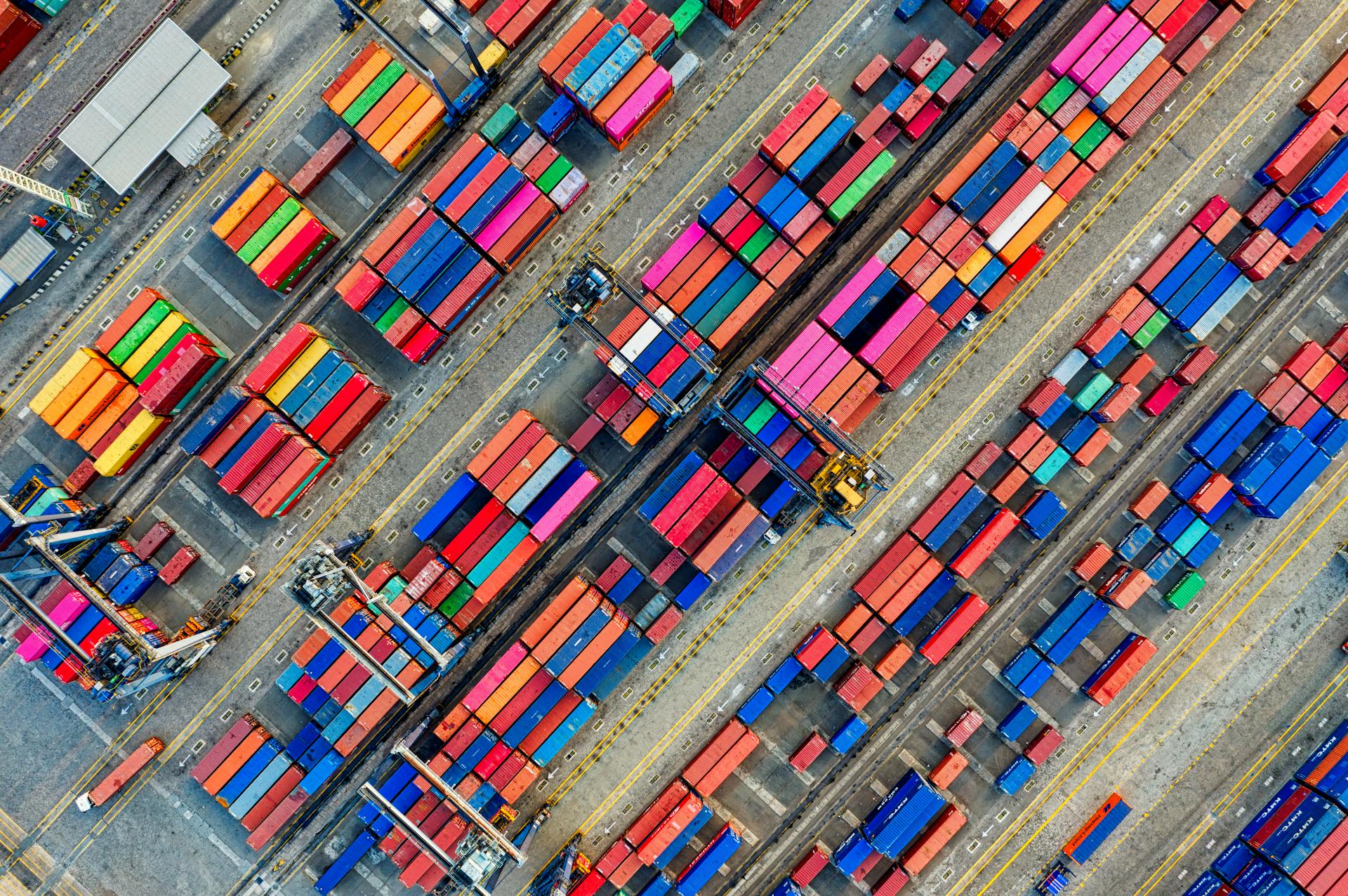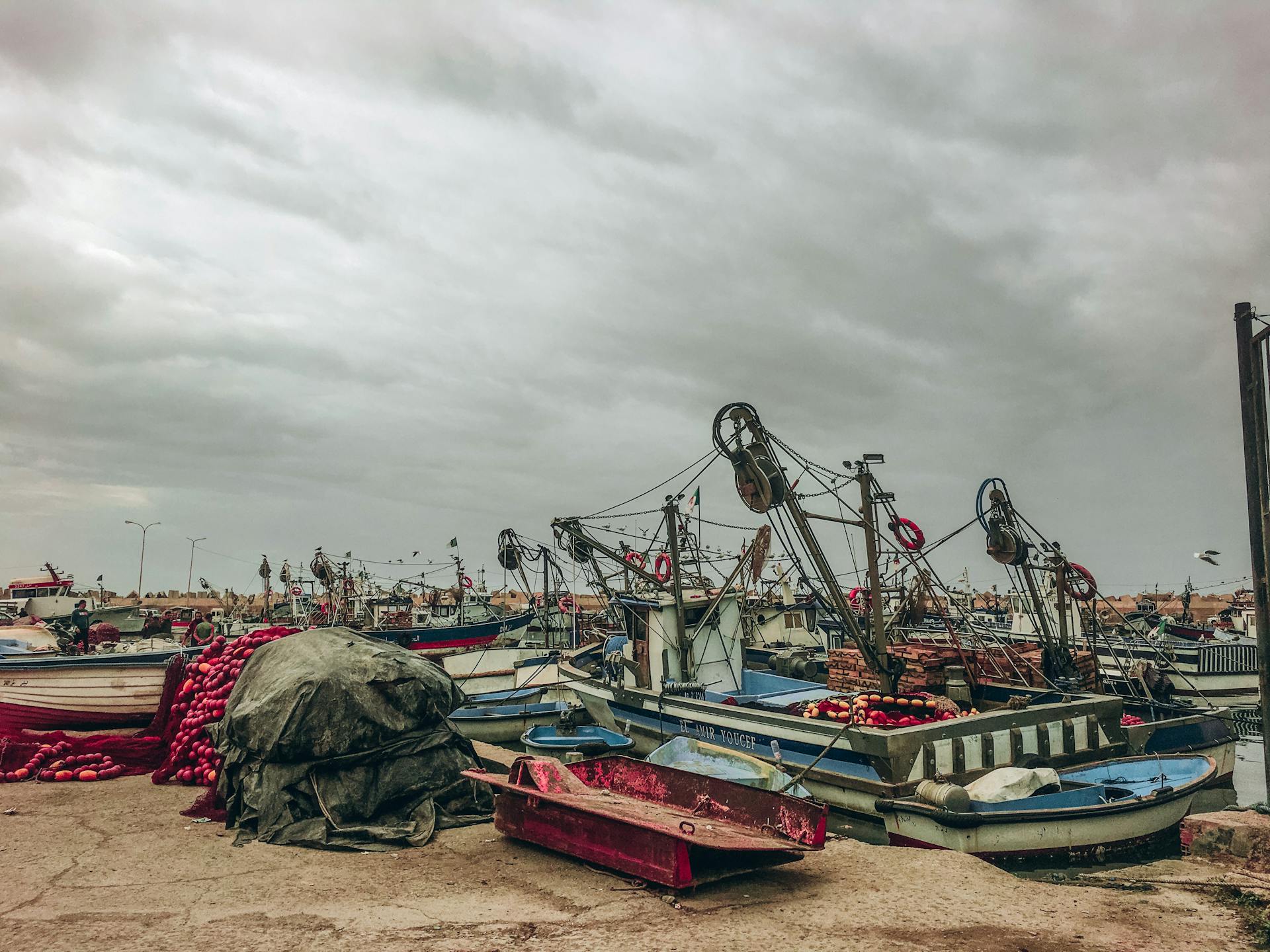
Albania has a significant number of ports along its coastline, each with its own unique characteristics and commercial areas.
The port of Vlorë is one of the largest and most important commercial areas in Albania, handling a significant amount of cargo and passenger traffic.
Durrës is another major port in Albania, known for its strategic location and busy commercial activities.
The port of Vlorë is located on the Adriatic Sea and serves as a major hub for trade and commerce in the region.
Major Ports
The Port of Durrës is the largest seaport in Albania, located in the city of Durrës on the Adriatic Sea. It has approximately 763 meters of alongside pier space and is one of the largest passenger ports in the Adriatic Sea, handling around 1.5 million passengers annually.
The port has 11 docks for loading and unloading ships, with water depths between 7 and 11.5 meters allowing several large ships to enter. It can handle a wide variety of cargo, including general goods, containers, and liquids like fuel.
The Port of Durrës is a major gateway to the Balkans, with excellent road and rail connections, making it easy to handle liquid petroleum, bulk cargo, and other goods. It's also the perfect point for international cruise tourism in the country.
Here's a summary of the major ports in Albania:
Vlorë
Vlorë is the second-largest port in Albania, located on the coast of the Adriatic and Ionian Seas. It's a crucial hub for maritime trade, connecting Albania with Italy and other parts of Europe.
The port has a UN/LOCODE of ALVOA and is managed by the Port Authority of Vlorë. It's situated at 40o 29′ 48″ north and 19o 27′ 31″ east, with a port channel depth ranging from 31 to 35 feet.
A cargo pier can accommodate medium-sized vessels with a depth of 16 to 20 feet, and there's a 1-foot tide at the port on average. Anchorage depth is between 56 and 60 feet, and the oil terminal depth is approximately 31 to 35 feet.
Vlorë Port handles a wide variety of cargo, including agricultural products, machinery, and industrial goods. It also offers passenger services, with ferries to nearby countries. The port is connected to the major roads and railway lines of Albania and neighboring countries.
Here's a brief overview of the port's annual statistics:
The port has separate areas for dealing with dry cargo, petroleum products, and seafood. Vlorë's fishing harbour lies in Skel, and the city offers ferries to Italian and Greek Ports.
Shengjin
Shengjin Port is the northernmost seaport in Albania, located in the northwest part of the city. It's a significant hub for cargo and fishing vessels.
Shengjin Port handles approximately 3 million TEUs (Twenty-foot Equivalent Units) annually, making it a crucial part of local and regional trade. It also processes around 293 thousand tons of cargo.
The port's convenient location makes it an ideal spot for visiting attractions and contributing to the local economy. Tourism is booming along its beautiful coastline.
An island berth for tankers is available for refinery operations, and oil terminals are designed to accommodate the specific needs of oil and fuel transport. This provides ships with fair shelter during weather conditions.
Shengjin Port has two piers or jetties that extend into the Adriatic Sea, and it also handles cargo, passenger ferries, and fishing boats. The main export is agricultural produce.
RORO facilities are available for passenger vehicles, and the port also handles food items, minerals, construction materials, and timber. Ferries leave from Shengjin to ports in Italy and Montenegro in the summer season.
Saranda
Saranda is a major port in Albania, situated on the southwest coast of the country, facing Corfu Island. It's a medium-sized facility handling cargo and passengers.
The harbour area is undergoing an expansion, which includes a new cruise line terminal. This will help boost tourism in the country.
Large vessels are currently docked outside the port area, waiting to be processed. This is a sign of the port's growing importance.
The ferry terminal is used for international arrivals and departures, offering customs clearance. Ferries regularly go to Corfu from here.
Cruise Ships and private yachts are also frequent visitors to Saranda. They take advantage of the port's excellent facilities.
The cargo handling area accommodates containerised goods, construction materials, and agricultural products. This is a vital service for the local economy.
The government of Albania plans to modernise and renovate this Port to handle more cargo traffic. This will make Saranda an even more important hub for trade and tourism.
Patos-Marinza
Patos-Marinza is home to a minor port that plays a crucial role in the region's energy industry.
The port focuses on moving petroleum products from nearby oil fields, which is a vital contribution to the local economy.
This port is a key player in the region's energy infrastructure, and its operations have a significant impact on the local energy industry.
Commercial Areas
Commercial areas in Albania's ports are often located near the city centers, making it easy for locals and tourists to access them. The port of Vlorë, for example, has a commercial area that's just a short walk from the city's main square.
The port of Durrës has a large commercial area that's home to many shops, restaurants, and warehouses. The port's strategic location near the city's historic center makes it a hub for trade and commerce.
The commercial areas in Albania's ports often have a mix of old and new buildings, reflecting the country's rich history and its efforts to modernize its infrastructure.
Main Commercial Areas
Commercial areas are found in various parts of the city, each with its own unique character and charm.
The Central Business District is the main hub for shopping and dining, with many high-end stores and restaurants lining the streets. It's a popular spot for both locals and tourists.
The area is easily accessible by public transportation, making it a convenient destination for those without cars.
Sarande
Sarande is a medium-sized port facility on the southwest coast of Albania, facing Corfu Island.
It's a major entry point for tourists visiting the country by sea, and the harbour area is currently undergoing an expansion.
The ferry terminal at Sarande is used for international arrivals and departures, offering customs clearance and regular ferry service to Corfu.
Large vessels are currently docked outside the port area, and the cargo handling area accommodates containerised goods, construction materials, and agricultural products.
The government of Albania plans to modernise and renovate the Port to handle more cargo traffic, including building new berths and dredging the port basin.
Sarande is a great spot for exploring the nearby coast, where you'll find some of the very best beaches in Albania.
Ferries regularly go to Corfu from Sarande, making it a convenient option for those looking to visit the island.
Cruise ships and private yachts are also frequent visitors to the Port of Sarande.
Harbors and Infrastructure
The harbors and infrastructure of Albania's ports are quite impressive. The Durres Port, for instance, has ten berths and around 763 meters of alongside pier space on the West Mole.

A small harbour was constructed for fishing boats at the Durres Port, and operations began in 2013. This harbour handles all kinds of cargo, including breakbulk and bulk cargo, general cargo, steel and non-ferrous products, RORO, palletised goods and containers.
The port has warehouses for storing goods like timber, grains, reefer, and general cargo. Approximately 603,000 tonnes of cargo and 770,800 passengers are handled at the port annually.
Shengjin harbour, on the other hand, is the northernmost seaport in Albania, modernised and expanded in the 1970s-80s. It has two piers or jetties which extend into the Adriatic Sea.
Orikum Marina
Orikum Marina is an operational marina in Albania, located 1.5 km north of the small town of Orikum in the bay of Vlorë, Southern Albania.
The Marina of Orikum is officially recognized as an International Port, a title it received in 2018.
It's now an important reality in Albania and beyond, thanks to the numerous International Regattas, Institutional Events, and Fashion Shows organized at the Marina.
The port of Orikum focuses on tourism, fishing, and light cargo handling which is mostly linked to the agriculture and local industries of the region.
Aids naval and military activities are also supported by the Port of Orikum.
Shëngjin Harbour
Shëngjin Harbour is a crucial part of Albania's coastal infrastructure. Located in Northern Albania, on the Adriatic Sea, it's the northernmost seaport in the country.
This harbour has a rich history, modernized and expanded in the 1970s-80s during the communist period. It operated as a commercial and fishing harbour at that time.
Shëngjin Harbour handles a variety of cargo, including agricultural produce, food items, minerals, construction materials, and timber. Ferries also leave from here to ports in Italy and Montenegro in the summer season.
The harbour has two piers or jetties that extend into the Adriatic Sea, making it a vital hub for trade and transportation. RORO facilities are also available for passenger vehicles.
Shëngjin Harbour plays a significant role in Albania's economy, handling bulk goods and facilitating trade between Western Balkans and Albania. Its strategic location makes it an ideal hub for tourism and cross-border transportation.
Infrastructure
The Durres Port has a robust infrastructure that supports its busy operations. The port has ten berths and around 763 meters of alongside pier space on the West Mole.
A small harbour was constructed for fishing boats, and operations began in 2013. This harbour is a vital addition to the port's infrastructure.
The port handles a wide range of cargo, including breakbulk and bulk cargo, general cargo, steel and non-ferrous products, RORO, palletised goods, and containers. This variety of cargo requires specialized storage facilities.
The port has warehouses for storing goods like timber, grains, reefer, and general cargo. These warehouses help keep cargo safe and secure until it's ready to be transported.
Approximately 603,000 tonnes of cargo are handled at the port annually. This is a significant amount of cargo, and the port's infrastructure is well-equipped to handle it.
The port also offers regular cargo and passenger ferry services to Ancona, Trieste, and Bari. This service is popular among passengers and cargo owners alike.
In 2019, a customs office of the Republic of Kosovo opened in the Port, simplifying the import of cargo to Kosovo. This development has relieved the Vermica/Mornia border crossing.
Frequently Asked Questions
What is the largest port in the Balkans?
The port of Durres is the largest in the Balkans, with a commercial capacity of over 5 million tons of cargo. Located on the Albanian coast, it has been a major gateway to the region for over 2600 years.
Featured Images: pexels.com


